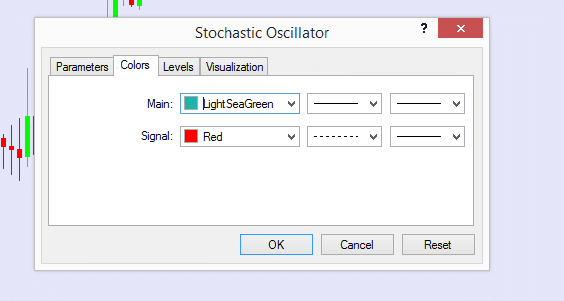
There is no way to track the change in balance over time for a particular account. A double entry system is considered complex and is employed by accountants or CPAs (Certified Public Accountants). The information they enter needs to be recorded in an easy to understand way.
- Its a ledger account that has the account title at the top, debits on the left, credits on the right while a middle line separates the two columns, resembling a large T drawn on the page.
- This is consistent with the rules of debit and credit that have been previously mentioned.
- I’ve agreed to pay for the coffee machine next month so my accounts payable is increased (credited) by £700.
- We follow strict ethical journalism practices, which includes presenting unbiased information and citing reliable, attributed resources.
Debit entries are depicted to the left of the “T” and credits are shown to the right of the “T”. The grand total balance for each “T” account appears at the bottom of the account. A number of T accounts are typically clustered together to show all of the accounts affected by an accounting transaction.
The left side of the Account is always the debit side and the right side is always the credit side, no matter what the account is. This visual guide helps you ensure figures are being posted in the correct way, potentially reducing data entry errors. When you do your account balance, the balance itself should go on what’s called the “normal side”. We also have an accompanying spreadsheet which shows you an example of each step. Ask a question about your financial situation providing as much detail as possible.
Step 2 of 3
Harold Averkamp (CPA, MBA) has worked as a university accounting instructor, accountant, and consultant for more than 25 years. To learn more about the role of bookkeepers and accountants, visit our topic Accounting Careers. In this example, I need to pay rent for the next quarter in advance for my coffee shop’s unit space. On the left side of the T table, under the account name, that’s what we call the debit side (abbreviated dr). At its basis debit simply means left side; credit simply means right side. We strive to empower readers with the most factual and reliable climate finance information possible to help them make informed decisions.

Debits and credits can be used to increase or decrease the balance of an account. This will depend on the nature of the account and whether it is a liability, asset, expense, income or an equity account. A T-Account is an accounting tool used to track debits and credits for a single account. It is typically represented as two columns with the accounts that have been affected listed on either side, usually labeled Debit (left) and Credit (right).
T-Account vs Balance Sheet
Electronic accounting processes can add another level of security and accuracy to calculations. Every month £2000 is credited from this account, reducing the asset as I make use of the property. Rent is classed as an operating cost as it’s a standard cost required to run my business. T-accounts help to visualise the process making it clear what is occurring with each transaction. Due to the fortunate ‘T’ shape, these diagrams can be used to map out transactions before they are posted into the company’s ledgers to ensure they are correct.
This is why a T account structure is used, to clearly mark the separation between “debits” and “credits”. T-accounts can also be used to record changes to the income statement, where accounts can be set up for revenues (profits) and expenses (losses) of a firm. For the revenue accounts, debit entries decrease the account, while a credit record increases the account. On the other hand, a debit increases an expense account, and a credit decreases it. You can also use the T-accounting method for any transaction in your small business, including office expenses. You may be paying for the internet at your small business storefront.

This can be during the normal course of business or when preparing adjusting entries at the end of an accounting period. As you can observe from the above example, all the debit and credits entries have been posted to the appropriate side of the respective t-accounts. This will give the management (Bob in this case) a holistic view of what is happening in his accounts and if there is anything out of the ordinary occurring. A T-Account records the debits and credits that affect an account, as well as the running balance of the account.
Small business owners, accountants, or bookkeepers accustomed to double-entry-style accounting use this tool, which can serve as a powerful graphic aid to ensure accounts balance out. A T-account is a tool used within a ledger to represent a specific account, while a ledger is a complete record of all financial transactions for a company. When learning the accounting process, from debits and credits to double-entry, it’s easy to get lost in the process and miss the big picture. By breaking transactions down into a simple, digestible form, you can visualise which accounts are being debited and which are being credited.
Create a free account to unlock this Template
Our goal is to deliver the most understandable and comprehensive explanations of climate and finance topics. We follow ethical journalism practices, which includes presenting unbiased information and citing reliable, attributed resources. Much of our research comes from leading organizations in the climate space, such as Project Drawdown and the International Energy Agency (IEA). Carbon Collective is the first online investment advisor 100% focused on solving climate change. We believe that sustainable investing is not just an important climate solution, but a smart way to invest.
A single entry system of accounting does not provide enough information to be represented by the visual structure a T account offers. T-accounts are used to visualize the balances of individual accounts. While a journal entry is a record of a single transaction in chronological order, showing the debits and credits of each account affected. T-accounts are commonly used to prepare adjusting entries at the end of an accounting period. The adjusting entries will journalize the difference between the account balances as shown in the general ledger and the actual account balances.
Create a Free Account and Ask Any Financial Question
Instead, the accountant creates journal entries in accounting software. Thus, T accounts are only a teaching and account visualization aid. The bottom set of T accounts in the example show that, a few days later, the company pays the rent invoice. This results in the elimination of the accounts payable liability with a debit to that account, as well as a credit to the cash (asset) account, which decreases the balance in that account. Regardless of your method, T-accounts are great ways to understand how transactions affect various financial statements created from the general ledger.
Alloy.ai Empowers USAopoly With Better Visibility Into Retail Sales and Inventory – Yahoo Finance
Alloy.ai Empowers USAopoly With Better Visibility Into Retail Sales and Inventory.
Posted: Tue, 08 Aug 2023 13:00:00 GMT [source]
Using T Accounts, tracking multiple journal entries within a certain period of time becomes much easier. Every journal entry is posted to its respective T Account, on the correct side, by the correct amount. Debits and Credits are simply accounting terminologies that can be traced back hundreds of years, which are still used in today’s double-entry accounting system.
Whenever cash is received, the Cash account is debited (and another account is credited). Brixx, our financial forecasting tool, helps you with this process further. When you enter any forecast activity, the double-entry process is completed for you, saving you time and giving you confidence in the numbers.
A double entry system is time-consuming for a company to implement and maintain, and may require additional manpower for data entry (meaning, more money spent on staff). These errors may never be caught because a double entry system cannot know when a transaction is missing. For example, if a company issued equity shares for $500,000, the journal entry would be composed of a Debit to Cash and a Credit to Common Shares.

Posting of these debit and credit transaction to the individual t-accounts provides for an accurate visualization technique for knowing what is happening in each individual account. It provides the management with useful information such as the ending balances of each account which they t account example can then use for a variety of budgeting or financial purposes. The opposite of what increases the account balances will hold to decrease those accounts. For instance, a debit is used to increase an expense account, therefore logically a credit would be used to decrease that account.
One is to teach accounting, since it presents a clear representation of the flow of transactions through the accounts in which transactions are stored. A second use is to clarify more difficult accounting transactions, for the same reason. We’ve been developing and improving our software for over 20 years! Thousands of people have transformed the way they plan their business through our ground-breaking financial forecasting software.
Below is a short video that will help explain how T Accounts are used to keep track of revenues and expenses on the income statement. A business owner can also use T-accounts to extract information, such as the nature of a transaction that occurred on a particular day or the balance and movements of each account. Whether you’re doing manual or electronic accounting for your small business, you should make T-accounts a habit to double-check your financial standing.
Once again, debits to revenue/gain decrease the account while credits increase the account. For different accounts, debits and credits can mean either an increase or a decrease, but in a T Account, the debit is always on the left side and credit on the right side, by convention. The debit entry of an asset account translates to an increase to the account, while the right side of the asset T-account represents a decrease to the account. This means that a business that receives cash, for example, will debit the asset account, but will credit the account if it pays out cash. A T-account works by showing how a transaction creates an increase and decrease in two separate accounts.
